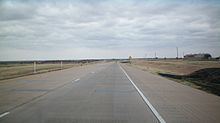 | ||
2015 north texas football hype video
North Texas (also commonly called North Central Texas, Northeastern Texas, and Nortex) is a term used primarily by residents of Dallas, Fort Worth, and surrounding areas to describe much of the northern portion of the U.S. state of Texas. Residents of the Dallas–Fort Worth Metroplex generally consider North Texas to include the area south of Oklahoma, east of Abilene, west of Paris, and north of Waco. A more precise term for this region would be the northern part of the central portion of Texas. It does not include the Panhandle of Texas, which expands further north than the region previously described, nor does it include most of the region near the northern border of Texas.
Contents
- 2015 north texas football hype video
- North texas fb bethune cookman vs nt 9 10 nt game highlights
- North Texas climatology
- Counties
- Statistical areas
- DallasFort Worth TX OK Combined Statistical Area
- Wichita Falls area
- Other
- Top employers
- Commercial Airports
- Public Transit
- Sports
- Major professional sports teams
- Other professional teams
- Division I college athletics
- References
North Texas is centered upon the Dallas–Fort Worth Metroplex, the largest metropolitan area in Texas. People in the Dallas and Fort Worth areas sometimes use the terms "Metroplex", "DFW", and "North Texas" interchangeably. However, North Texas refers to a much larger area that includes many rural counties.
North texas fb bethune cookman vs nt 9 10 nt game highlights
North Texas climatology
The North Texas climate is subtropical with hot summers. It is also continental, characterized by a wide annual temperature range. Average annual precipitation also varies considerably, ranging from less than 28 to more than 48 inches (700–1200 mm). Severe storms are frequent in the spring, as the area lies in the southern section of "tornado alley".
Average annual rainfall for North Central Texas, south is the prevailing wind direction, and southerly winds are frequently high and persist for several days. Strong northerly winds often occur during the passage of cold fronts. Dusty conditions are infrequent, occurring mostly with westerly winds. Dust storm frequency and intensity depend on soil conditions in eastern New Mexico, west Texas, and the Texas Panhandle.
Winters are mild, but northers occur about three times each month, and often are accompanied by sudden drops in temperature. In Dallas, a record-setting 12.8 inches of snow fell in February 2011. Periods of extreme cold that occasionally occur are short-lived, so that even in January mild weather occurs frequently.
The highest temperatures of summer are associated with fair skies, westerly winds and low humidities. Characteristically, hot spells in summer are broken into three- to five-day periods by thunderstorm activity. There are only a few nights each summer when the low temperature exceeds 80 °F (27 °C). Summer daytime temperatures frequently exceed 100 °F (38 °C). Air conditioners are recommended for maximum comfort indoors and while traveling via automobile.
Throughout the year, rainfall occurs more frequently during the night. Usually, periods of rainy weather last for only a day or two, and are followed by several days with fair skies. A large part of the annual precipitation results from thunderstorm activity, with occasional heavy rainfall over brief periods of time. Thunderstorms occur throughout the year, but are most frequent in the spring. Hail falls on about two or three days a year, ordinarily with only slight and scattered damage. Windstorms occurring during thunderstorm activity are sometimes destructive. Snowfall is uncommon.
The average length of the warm season (freeze-free period) is about 249 days. The average last occurrence of 32 °F (0 °C) or below is mid March and the average first occurrence of 32 °F or below is in late November.
Counties
Although the terms "Northeastern Texas" or "North Texas" are not official state designations, the Texas State Data Center and Office of the State Demographer lists the following counties as belonging to the North Central Texas Council of Governments (NCTCOG):
The Texas State Demographer also lists the following regional county groupings, some or all of which are often included in the informal meaning of the terms "North Texas" or "North Central Texas."
Additionally, some other Texas counties contiguous with those named above are sometimes included in the general meaning of "North Texas."
Statistical areas
In the North Texas region there is one combined statistical area, three metropolitan areas, and six micropolitan areas.
Dallas–Fort Worth TX-OK Combined Statistical Area
Metropolitan Statistical Areas (MSAs)
Micropolitan Statistical Areas (μSAs)
Wichita Falls area
Metropolitan Statistical Areas (MSAs)
Micropolitan Statistical Areas (μSAs)
Other
Micropolitan Statistical Areas (μSAs)
Top employers
Dallas–Fort Worth Metroplex
Wichita Falls Metropolitan Area
Sherman–Denison Metropolitan Area
Commercial Airports
Public Transit
Sports
The North Texas region has teams from the four major professional sports leagues. Major professional sports first came to the area in 1960, when the Dallas Cowboys began competing in the National Football League and the Dallas Texans began competing in the American Football League. (The Texans later relocated to Kansas City and become the Chiefs). In 1972, Major League Baseball's Washington Senators moved to Arlington to become the Texas Rangers, named after the statewide law enforcement agency. The National Basketball Association expanded into North Texas in 1980 when the Dallas Mavericks were added to the league. The fourth sport was added in 1993 when the Minnesota North Stars of the National Hockey League moved to Dallas, becoming the Dallas Stars.
The Major League Soccer team FC Dallas is based in Frisco, and the Dallas Wings of the WNBA plays in Arlington. The area is also home to many minor-league professional teams, and four colleges that compete in NCAA Division I athletics.
Major professional sports teams
^- Indicates year team relocated to the area
Other professional teams
^- Indicates year team relocated to the area
Division I college athletics
The headquarters for both the Big 12 and Conference USA are located in Irving, and the Southland Conference headquarters are in Frisco.
